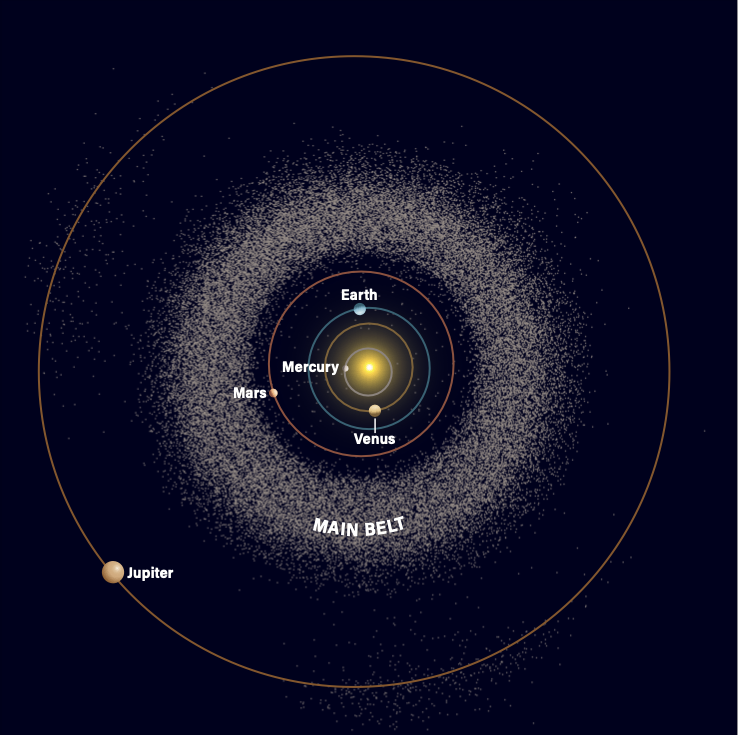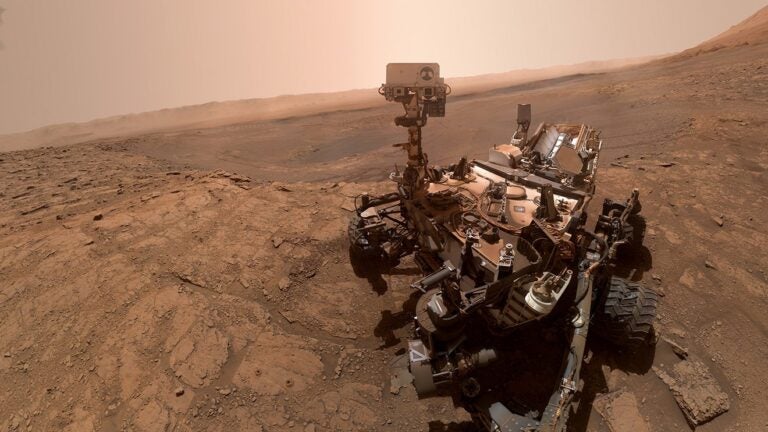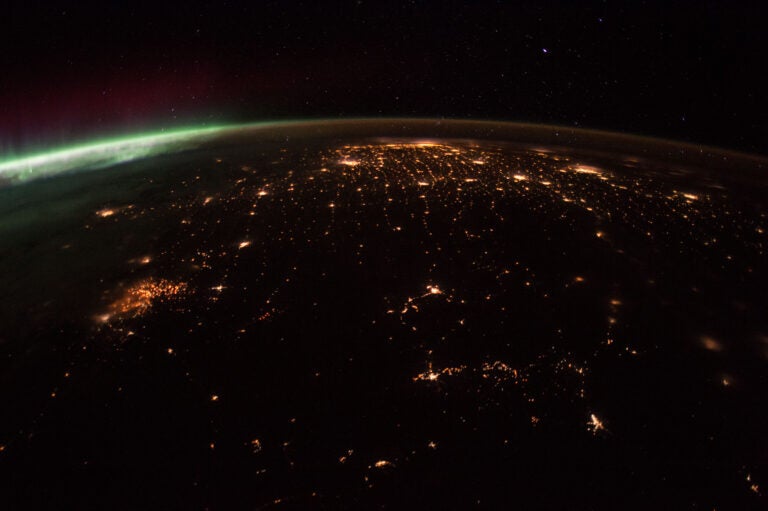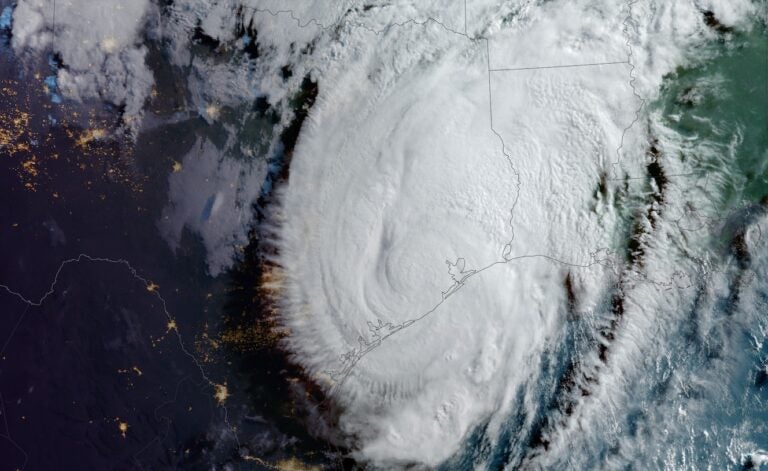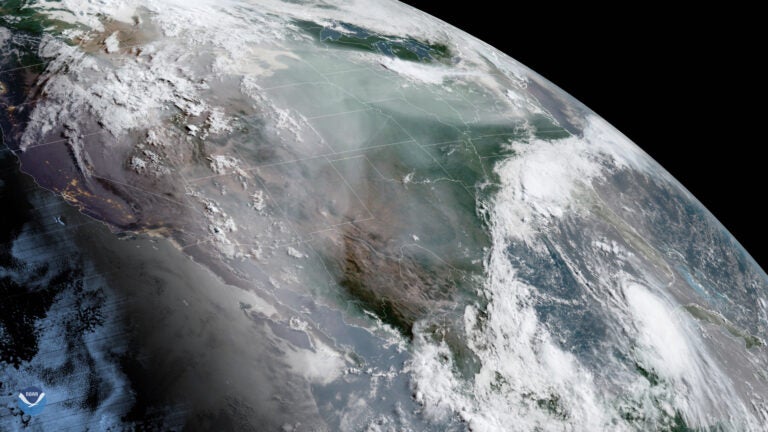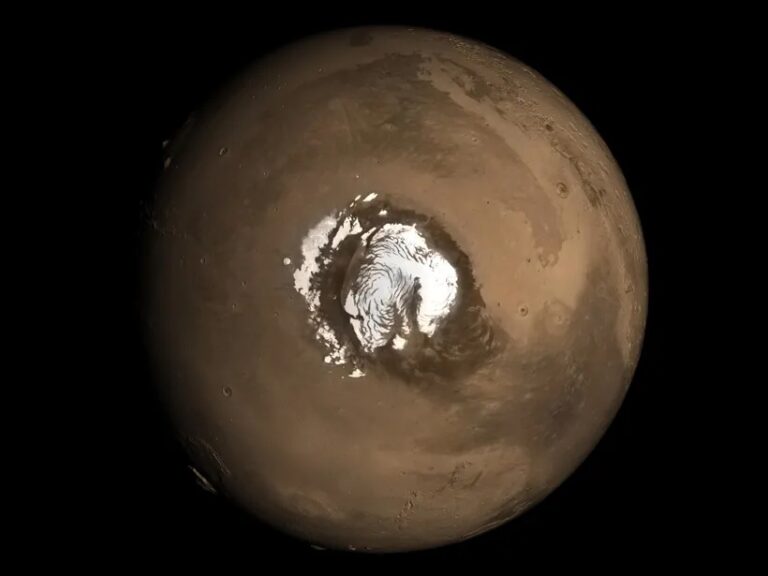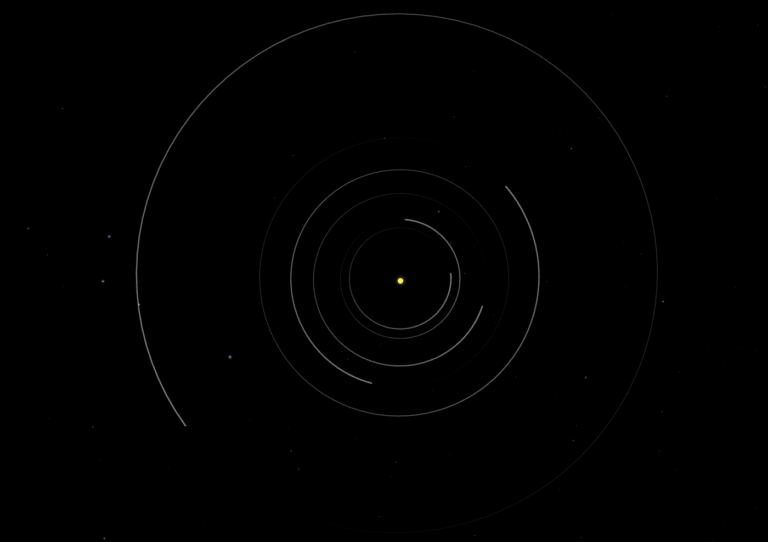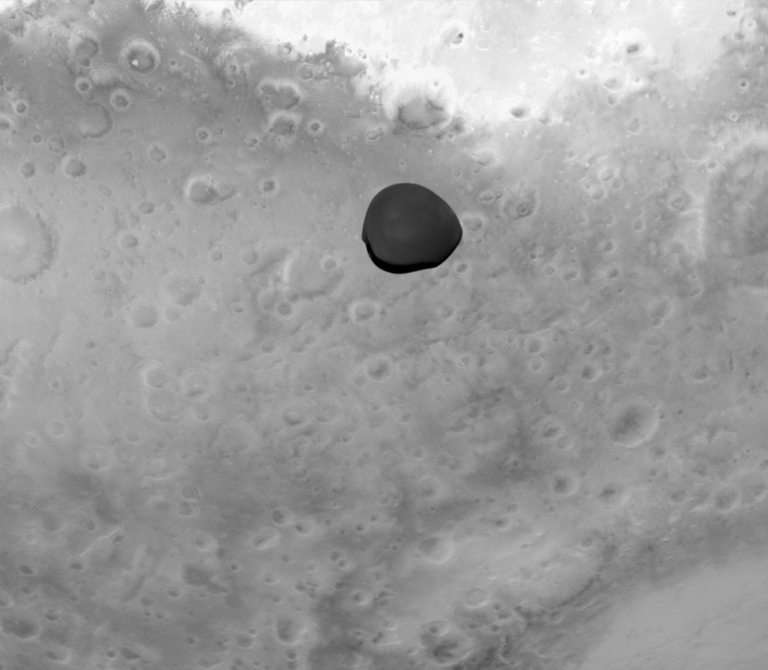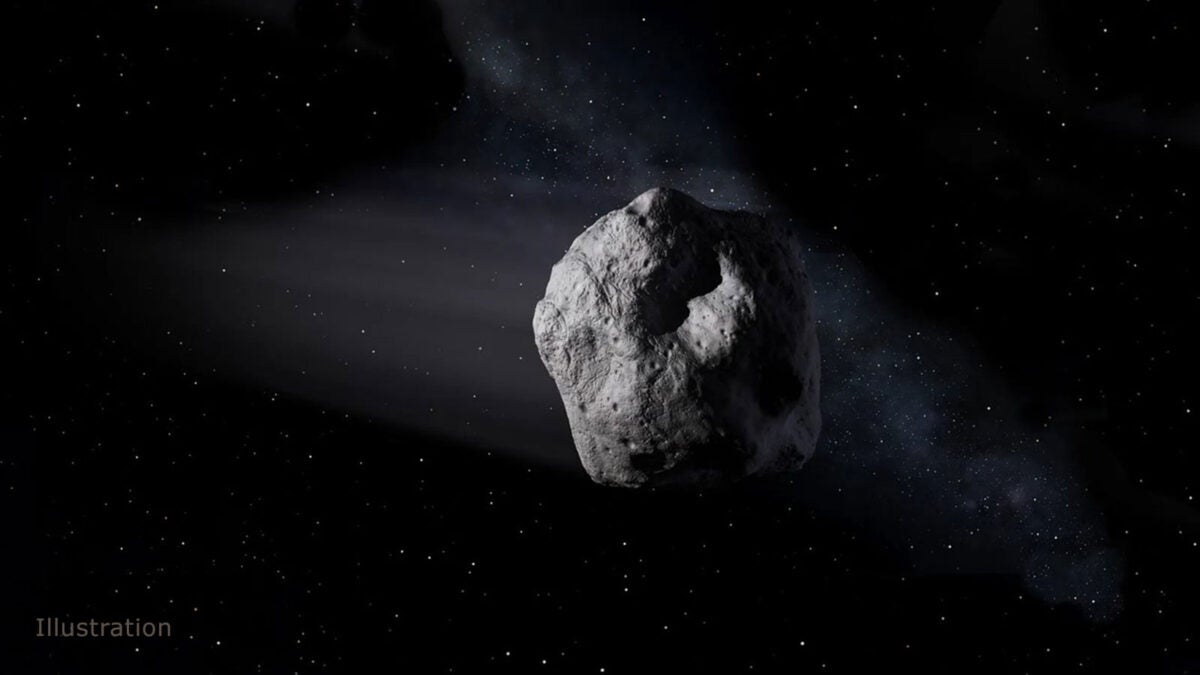
UPDATE Feb. 24, 2025: With new observations over the weekend, the odds of 2024 YR4 hitting Earth in 2032 have declined to 0.0039 percent — effectively eliminating concerns about that encounter. 2024 YR4 has now fallen from the riskiest asteroid on NASA’s automated Sentry list of potentially hazardous asteroids to the seventh highest position.
In December, the Asteroid Terrestrial-impact Last Alert System (ATLAS), located in Chile, identified an asteroid they automatically designated 2024 YR4. The solar system is flooded with asteroids that range in size from sand grains to planetoids, and NASA tracks as many of them as they can, plotting their trajectories to make sure they stay in their orbital lanes and out of Earth’s path. But after a few weeks of tracking, 2024 YR4 began to set off alarm bells, when it showed a small but non-negligible chance of impacting Earth on a future close approach on December 22, 2032.
That estimated risk has fluctuated over the past few days. Today, NASA announced that fresh observations from the past two nights had reduced the chance of an impact with Earth to 0.28 percent. As more data comes in to further refine the orbit, it’s likely that this will continue to shrink. But just two days ago, the odds had grown to 3.1 percent, setting a record for the highest probability for any asteroid of its size ever tracked by NASA.
Anything over 1 percent sets off an automated alarm and dedicated tracking program. As such, even though the risk remains small, NASA and other agencies around the world have been training all eyes on the interloper, to better understand it and its future path.
What’s the risk?
Right now, astronomers believe 2024 YR4 is anywhere from 130 to 300 feet (40 to 90 meters) wide. Given that, the calculations show that 2024 YR4 would impact with an energy of 7.7 megatons, the same size as the Bighorn nuclear test dropped on Christmas Island in 1962. It also fits into the range of sizes and energies that scientists ascribe to the Tunguska impact in 1908, which flattened trees and blasted reindeer but killed no people.
In other words, Earth has suffered such a blow already, with little loss of life. The asteroid is far from a planet killer. That’s not to say it doesn’t pack a tremendous amount of energy — with a direct hit, it could devastate a city. But it’s no coincidence that Tunguska, the largest asteroid impact in recorded history, struck an unpopulated area; that describes most of Earth, especially given that over 70 percent of the surface is ocean.
If the chance of 2024 YR4 striking Earth is currently 0.28 percent, the odds are still 99.72 percent that it doesn’t. Those are odds most of us would take. Still, NASA and other agencies will continue to refine the odds of collision over the coming months.
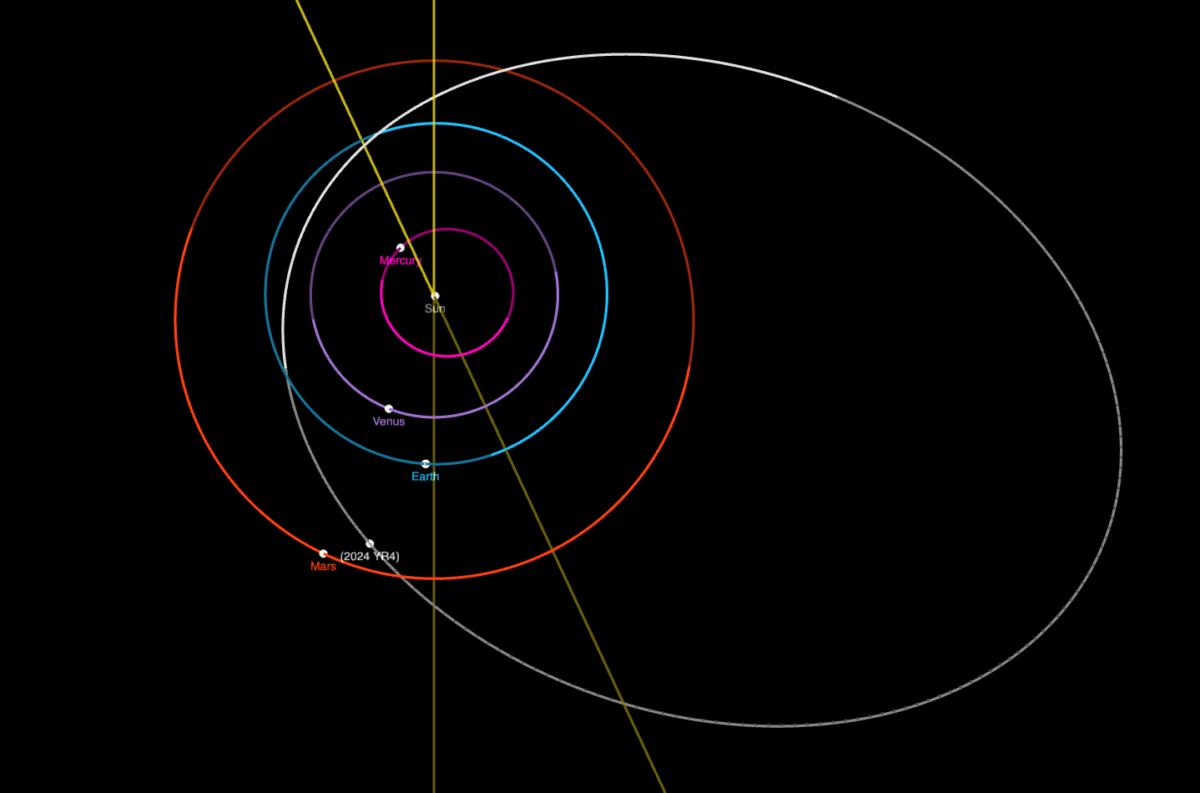
How are we tracking 2024 YR4?
Earth-based telescopes will be able to continue tracking the asteroid until April. After that point, it will recede from sight until its next approach in 2028. (It’s the approach after that one that has a possibility of impact.) To take advantage of this limited timeframe, an international group of astronomers have procured time on the James Webb Space Telescope (JWST). In addition to being a huge, space-based telescope with exceptional precision, JWST also observes in the infrared, which is key for asteroid observations.
Asteroids are small and dark. Compared to moons or planets, they don’t reflect much light, but it varies based on their composition. And so far, 2024 YR4 has been observed by visible-light instruments. Astronomers don’t currently have a way to ascertain whether the asteroid is larger and not very reflective or small and shiny. Observing in the infrared helps because an asteroid gives off its own infrared light. That should give astronomers a much better idea of the asteroid’s true size.
Those observations will occur in early March. In May, astronomers will look again. The span of five months from the asteroid’s first detection until it disappears gives a longer baseline from which to calculate its orbit, helping to further refine its path. The observations in May, as it cruises outward from the Sun, will also tell astronomers how the object is changing temperature, giving them some hints as to what it’s made of.
As more observations come in and calculations change, the Sentry webpage keeps updated estimates of the asteroid’s impact probability and strength.
What could we do?
NASA has long been preparing for a circumstance like this one. The DART mission, which impacted asteroid Dimorphos in September 2022, tested whether a direct impact could deflect an asteroid from its path — and it succeeded. Lab tests, too, show that laser deflections work. And scientists have long discussed using nuclear weapons, either to deflect the asteroid, or disrupt it (aka, the “blow it to smitheens” approach). Which of those approaches would be most effective for 2024 YR4 remains to be seen. But the upcoming observations will give astronomers a lot more information to put toward solutions, if one turns out to be needed.
Dawn Graninger is a researcher from Johns Hopkins’ Applied Physics Lab who works in planetary defense and was a co-investigator on the DART mission. “The tricky thing here,” she says, “is that the size of the object combined with the short warning time make determining the mitigation method complicated. If the asteroid is larger, we will need a larger impulse to deflect the asteroid. If the asteroid is smaller, an impulse could break up, or fragment, the asteroid.”
To be clear, the odds remain small, and now that they have fallen dramatically, further refinements are likely to make them become even smaller. But in the event that a solution is needed — for 2024 2024 YR4 or any other asteroid — the other big factor would be timing. “If we wanted to perform a reconnaissance mission or mitigate the asteroid, we would need to start building that spacecraft as soon as possible,” says Graninger. And while we have eight years until any possible impact, we have only a few months now to observe the asteroid. After that, we’d have to wait until 2028 for new information — and then it will be quite the rush.
“Mitigation missions require time for them to work,” Graninger adds. “Especially if we hope to deflect the object, a small velocity change to the asteroid needs years to ensure that the asteroid’s orbit will change so that it will not hit the Earth.”
That could leave astronomers with only the option of disruption — breaking it into smaller pieces. And while movies have speculated about such missions, no human agency has yet carried off such a feat. Space missions normally take decades of planning. On the other hand, there would be no lack of motivation by various agencies to make the mission happen.
The most likely outcome by far is still that the asteroid will sail harmlessly by Earth. Still, if you’re nervous, maybe don’t watch Armageddeon for a while.

